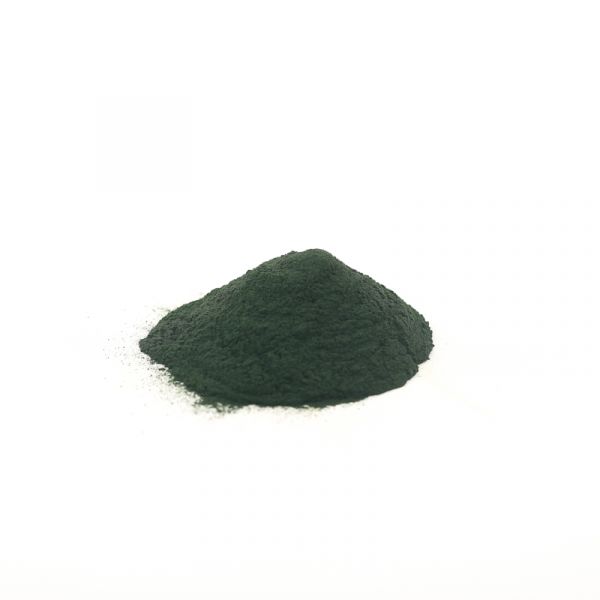
How to Incorporate Spirulina Powder into Your Cooking?
If you want to enjoy the flavors of spirulina in your dishes, sprinkle a teaspoon over raw vegetables, a vegetable soup, a fish dish, fresh cheese, a smoothie, or fruit juice. Avoid cooking spirulina to preserve its nutritional qualities. Always add spirulina after cooking, just before serving the dish.
Some Recipe Ideas for Using Spirulina Powder
- - Spirulina Smoothie: Mix a teaspoon of spirulina powder with bananas, spinach, almond milk, chia seeds, and honey for a revitalizing green smoothie;
- - Spirulina Energy Bites: Combine dates, nuts, chia seeds, rolled oats, shredded coconut, and a teaspoon of spirulina powder. Blend everything, form small balls, and refrigerate before enjoying;
- - Spirulina Guacamole: Prepare your usual guacamole with avocados, lime juice, red onions, tomatoes, and cilantro, then add a teaspoon of spirulina powder for a touch of color and an extra nutrient boost;
- - Spirulina Pasta: Incorporate a teaspoon of spirulina powder into your homemade pesto sauce made of basil, garlic, pine nuts, Parmesan, and olive oil. Mix with warm pasta for an original and nutritious dish;
- - Spirulina Vinaigrette: Make a vinaigrette by mixing olive oil, apple cider vinegar, Dijon mustard, honey, and half a teaspoon of spirulina powder. Use it to dress your salads;
- - Spirulina Hummus : Add a teaspoon of spirulina powder to your traditional hummus recipe (chickpeas, tahini, lemon juice, garlic, olive oil) for a colorful and protein-rich spread.
Maritime Flavors
Spirulina has a distinctive aroma that can surprise those unfamiliar with it. It possesses a pronounced marine odor, reminiscent of seaweed or seawater, due to its nature as an aquatic cyanobacterium. Its taste is equally unique, with slightly earthy and grassy notes, sometimes compared to spinach or green tea. Although its aroma can be intense for some, it blends well in smoothies, juices, and savory dishes, where it can be mellowed by other ingredients. Spirulina enthusiasts often appreciate this characteristic flavor, which reflects its richness in natural nutrients.
The Botany of Spirulina
Spirulina is a cyanobacterium, often called "blue-green algae," primarily belonging to the Arthrospira platensis and Arthrospira maxima species. It naturally grows in the alkaline waters of subtropical and tropical lakes, such as those in Africa, Asia, and Central America. Spirulina is cultivated on a large scale in controlled water basins to meet growing demand. Once harvested, spirulina is washed and filtered to remove impurities. It is then dried at low temperatures to preserve its nutrients before being ground into a fine green powder. This powder is then packaged to be used as a dietary supplement rich in proteins, vitamins, and minerals.
The History of Spirulina
The Aztecs in Mexico, for example, harvested spirulina from Lake Texcoco and consumed it in the form of dried cakes called "tecuitlatl." This superfood provided them with a valuable source of nutrients. In Africa, the Kanembu tribes living around Lake Chad also used spirulina, which they called "dihe." They harvested it from natural ponds, sun-dried it, and then consumed it in their traditional dishes. In the 1970s, spirulina gained popularity in the West, where it was marketed as a dietary supplement. Organizations such as NASA also studied spirulina for its potential as a sustainable food source for long-term space missions due to its high protein and essential nutrient content.
| Price/kg | 99 |
|---|---|
| Allergen | Absence |
| Native country | CHINE |
| Genus and botanical species | Spirulina platensis |
| Ingredients | spirulina powder |
| Nutritional Info | VN Energie pour 100 g (energy for 100g) : 1592 kJ / 380.5 kcal VN Matière grasse (fat) : 7.7 g Dont acide gras saturés (of which saturated fat) : 2.7 g VN Glucides (carbohydrate) : 20.3 g Dont sucres (of which sugars) : 3.1 g VN Protéines (protein) : 57.5 g Vn Sel (salt) : 2.6 g |
| Contenance | 250g |
| TRACES EVENTUELLES D'ALLERGÈNES | céleri, sésame, moutarde, fruits à coques. |
 Français
Français 